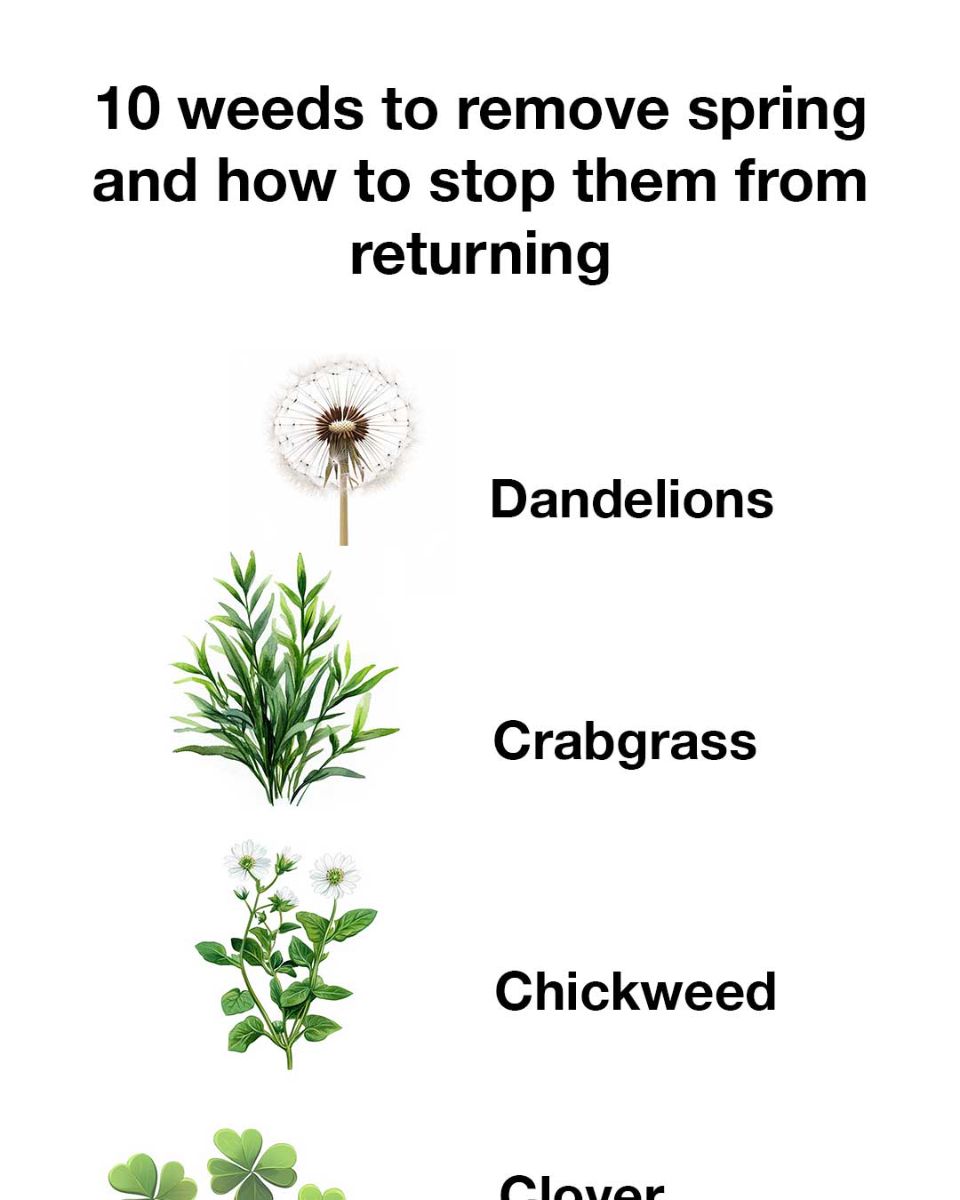Identifying the Top 10 Weeds to Remove in Spring

10 weeds to remove spring and how to stop them from returning
1. Dandelions – Known for their bright yellow flowers and fluffy seed heads.
2. Crabgrass – A common grassy weed that spreads quickly.
3. Chickweed – A low-growing weed with small white flowers.
4. Clover – Often found in lawns, with its distinctive trifoliate leaves.
5. Purslane – A succulent weed with thick, fleshy leaves.
6. Plantain – Recognizable by its broad leaves and tall seed spikes.
7. Thistle – A spiky weed that can be painful to touch.
8. Bindweed – A vine-like weed that can strangle other plants.
9. Creeping Charlie – A ground-covering weed with scalloped leaves.
10. Wild Onion – A bulbous weed with a strong onion smell.
Effective Techniques for Removing Weeds
Hand pulling is effective for small infestations, especially when the soil is moist. For larger areas, hoeing or using a weed puller can be more efficient. Ensure you remove the entire root to prevent regrowth. For persistent weeds, consider using a flame weeder or boiling water to kill them without chemicals.
Preventative Measures to Stop Weeds from Returning
Preventing weeds from returning involves maintaining a healthy garden environment. Regularly inspect your garden for new weed growth and remove them promptly. Use landscape fabric or plastic mulch to block sunlight and prevent weed seeds from germinating. Keep your garden well-maintained by trimming edges and mowing the lawn regularly.
Natural and Chemical Weed Control Options
Natural options include vinegar, which can be sprayed directly on weeds, and corn gluten meal, which prevents seed germination. Chemical herbicides are effective but should be used sparingly and according to the manufacturer’s instructions to avoid harming desirable plants and the environment.
The Role of Mulching in Weed Prevention
Mulching is one of the most effective ways to prevent weeds. A thick layer of organic mulch, such as wood chips or straw, blocks sunlight and prevents weed seeds from germinating. Mulch also retains soil moisture and adds nutrients as it decomposes, benefiting your plants.
How to Maintain a Healthy Lawn to Deter Weeds
A dense, healthy lawn is the best defense against weeds. Regularly mow your lawn at the proper height to encourage thick growth. Fertilize appropriately to provide nutrients, and water deeply but infrequently to promote strong root systems. Aerate your lawn annually to improve soil health and reduce compaction.
Seasonal Tips for Weed Management
In early spring, focus on removing weeds before they flower and set seeds. As the season progresses, continue to monitor and remove new growth. In late spring, apply pre-emergent herbicides to prevent summer weeds. Adjust your strategies based on the specific weeds and conditions in your garden.
Conclusion: Achieving a Weed-Free Garden
Achieving a weed-free garden requires diligence and a combination of strategies. By understanding the types of weeds you are dealing with and implementing effective removal and prevention techniques, you can maintain a beautiful and healthy garden throughout the spring and beyond. Consistent effort and attention to detail will keep your garden thriving and free from the competition of unwanted weeds.
